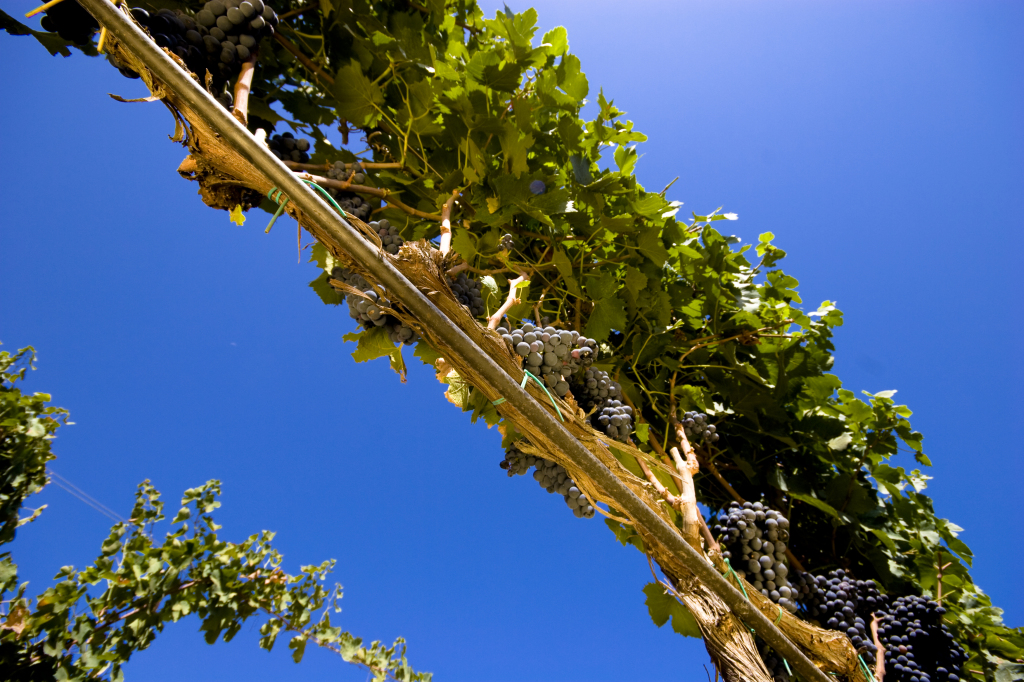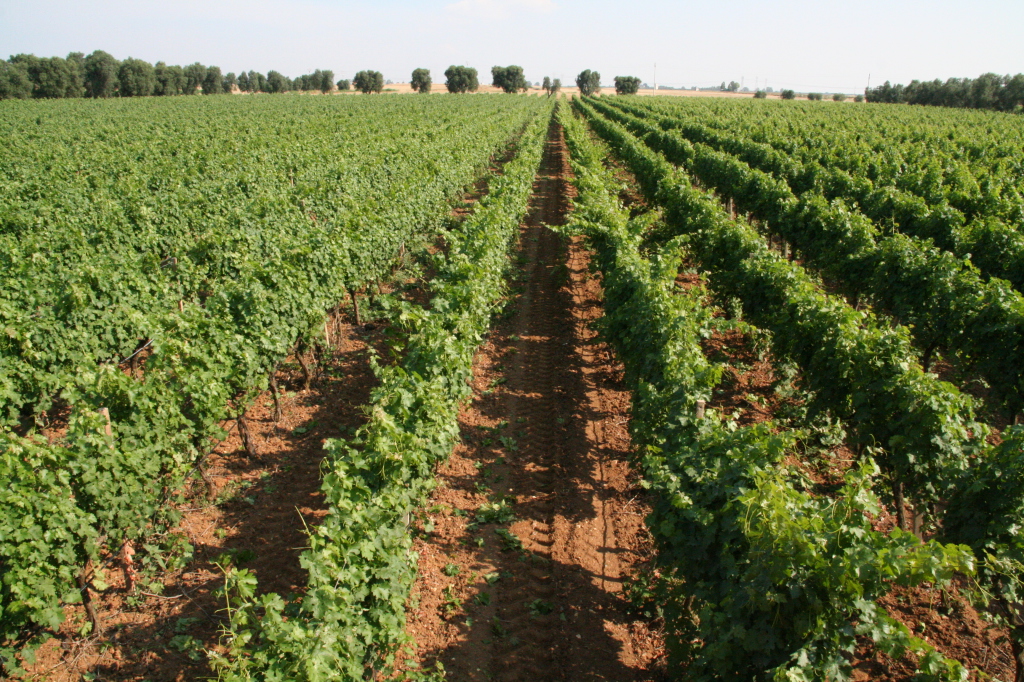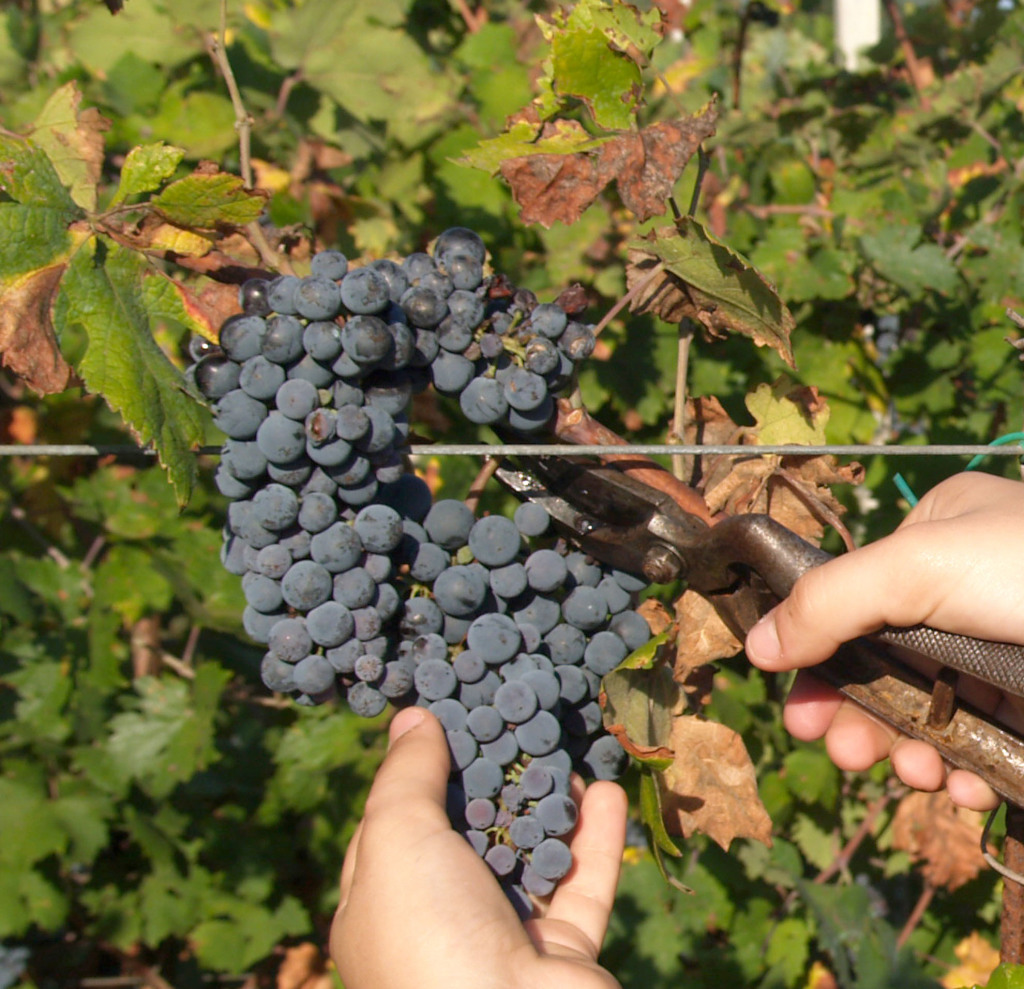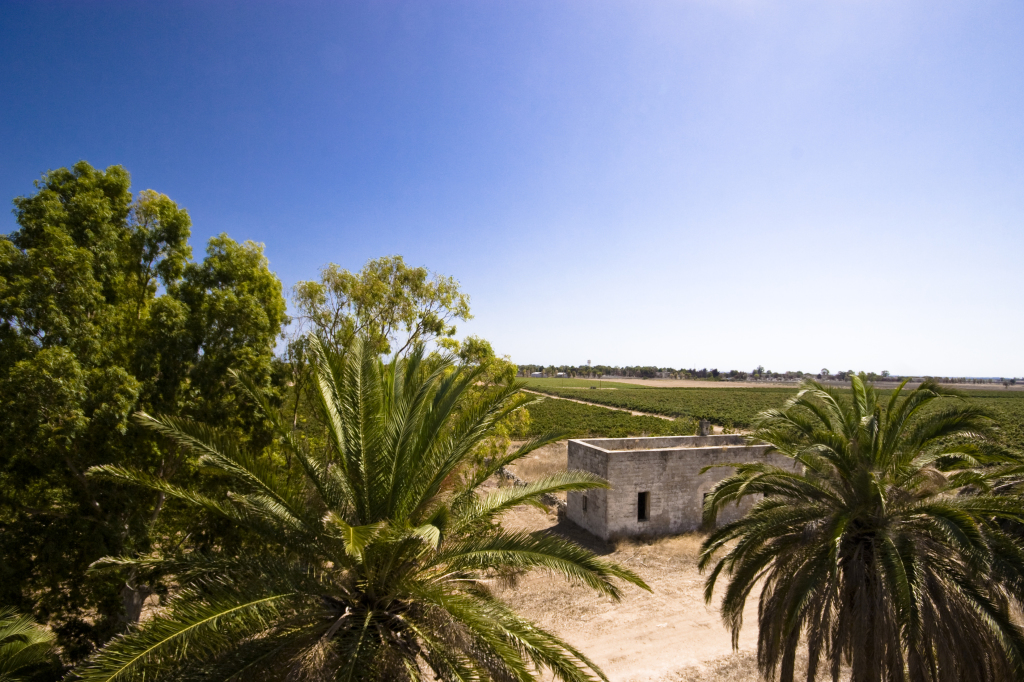Apulia is predominantly flat, with vast plateaus and low hills which reach all the way to the sea. Vineyards occupy a sizable portion of cultivable land. Viticulture has deep historical roots in this area: it began with the Greeks and the Romans, and continued with the Lombards, the Byzantines, the Normans, the Anjou and the Aragonese; nowadays Apulia is one of Italy’s most productive regions.
Currently the Apulian viticulture counts 4 DOCG and 28 DOC complemented by numerous sub-denominations. Altitude, soil composition, exposure and solar irradiation are factors especially favourable to black grapes that cover about the 70% of the total planted area. The most common varieties, particularly in Salento area, are Negroamaro and Primitivo from which were produced those wines that have contributed to the ultimate expression of Apulian oenology in the world.
Negroamaro
Among Apulia’s and Salento’s indigenous varieties, Negroamaro is certainly the most renowned; it is cultivated almost exclusively in this region, and has almost disappeared elsewhere. Its origins are not known - it might have been transplanted from the Balkans - but it is almost certain that its cultivation began with Greek colonization between the 7th and 8th Centuries BC, and continued through Roman times until the present day. This thesis seems to be confirmed by the etymology of the name Negroamaro, which derives from two words which mean “black”: the Latin word Nigra and the Greek word Mavros, used together to emphasize the dark colour which characterizes the grapes’ skin as well as the wine obtained from them.
In the past, due to its massive cultivation, Negroamaro was utilized exclusively to improve wines from northern Italy, thanks to its intense colour and powerful alcohol structure. This changed in the Seventies, when a group of producers chose to favour quality over quantity: the variety made a name for itself thanks to its great organoleptic traits, and won prestigious awards in several Italian oenological competitions.
Today, Negroamaro is riding the “new wave” of modern Apulian oenology. This variety is the pillar of several of Salento’s top wines; it yields fresh and sapid rosées as well as balanced and pleasant reds, and potent, grand wines with mature tannins, freshness, a soft and elegant texture, notes of spice and ripe fruit. Pure Negroamaro displays a deep ruby colour and a well rounded, spicy and dry taste; when harvested late it yields wines akin to Amarone della Valpolicella or Sfursat della Valtellina, but with a clearly Mediterranean, sunny personality. Its rosées – often vinified with some Malvasia Nera – have a very intense and brilliant colour, with tonalities which can vary from ancient pink to coral, and are suitable for all courses.
Morphologically, the grape bunches are of average size, with a tight, conic or conic-truncated shape; the grapes are medium-large with a thick, pruinose, violet/black skin. The pulp is juicy, sweet and with a neutral taste. Negroamaro has a medium/long maturation time, which extends well into the last ten days of September in some hilly areas. The particularly high quantity of total polyphenols is akin or even superior to some of Italy’s most renowned varieties, such as Nebbiolo which is used to produce Barolo and Barbaresco.
Primitivo
It is yet unknown when exactly Primitivo arrived in Apulia, but it is increasingly clear that it originated in Central Europe, and that hence it spread to the shores of the Adriatic Sea; it was exported to the United States in the first decades of the 19th century.
Primitivo is now widely recognized as an excellent dry red wine, sweet dessert wine and meditation wine.
Generally, red wines obtained from Primitivo are characterized by an intense, purple-red colour, which evolves with time towards ruby-red, garnet-red, and eventually orange tinges. The aromatic profile is dominated by pronounced scents of red and black fruits (raspberry, blueberry, red cherry, black cherry, blackberry and plum) – also in jam or alcohol-preserved – and of dry fruit (dry figs, carob and dry almonds), complemented by hints of aromatic herbs (wild mint, thyme) and minerals, with tobacco and liquorish nuances. A greater aromatic complexity, with balsamic, toasted and spicy notes, is typically obtained from older plants and through oak aging. The taste is full, powerful, warm, balanced and persistent, with supple and non-intrusive tannins; with age it becomes velvety and austerely elegant.
Primitivo di Manduria excels in strength, extractive richness and character, especially when the grapes are harvested from old alberelli planted in calcareous-clayey soil. Cultivation in sandy soils by the Ionian Sea confers a notable finesse to the wines, while those obtained from vines planted in alluvial soils are rounder and “fatter”.
In Gioia del Colle and some neighbouring municipalities (Acquaviva delle Fonti, Adelfia, Cassano delle Murge, Sammichele di Bari, Santeramo in Colle, Turi), due to the peculiar pedoclimatic conditions and to the calcareous-clayey soils resting upon wide strata of limestone, Primitivo achieves remarkable elegance, with fresh-sapid components and a surprising longevity – especially in the “Riserva” versions.
The red soils of Salento, in the provinces of Brindisi and Lecce, confer finesse, balance and excellent structure to Primitivo.
Nero di Troia
It is cultivated predominantly in Northern Apulia, in the areas between the provinces of Foggia and Bari; it is also found quite close to the seaside. Some hypotheses trace its origins to the Greek colonizers, over two thousand years ago; according to others it might have arrived from the nearby Albanian coast, or from Spain with the d’Avalos princes. The variety’s name might derive from the Homeric city of Troy, or more realistically from the namesake town in the Province of Foggia.
When vinified pure, this fascinating, noble and elegant variety yields a full-bodied and structured wine, with good alcohol levels and a not very pronounced acidity, with a thick and distinct tannic profile. When young, the colour is usually an intense ruby red with violet tinges, of fine consistency. The nose is charged with red fruit such as blackberries and cherries, with spiced aromas of black pepper and cloves.




